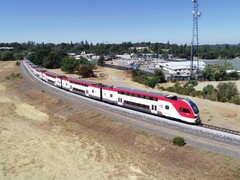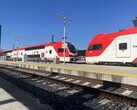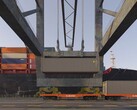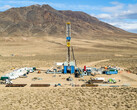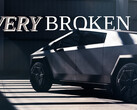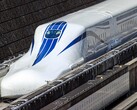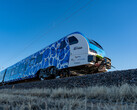Finally complete: Caltrain has electrified the entire route between San Francisco and San Jose (Tamien to be precise) and activated the overhead line. To this end, there was a major closure around Silicon Valley in order for final tests to be carried out.
The project (PDF), valued at over $2.4 billion, took several decades to complete. Caltrain's business plan envisaged electrification as early as 1999, which has now been completed. But there are also concerns about capacity, efficiency and costs
The billions include not only the costs for the construction of the overhead line (25kV@60Hz, 80 kilometers of the total route, mainly double track), but also other power supply stations, further extensions and the procurement of a total of 19 new seven-car double-decker trains. These will replace 20 diesel locomotives.
The Caltrain trains are used by a large number of IT staff who commute to major IT companies in Silicon Valley or work in the direction of San Francisco. From the fall, they will benefit significantly from the new service, as the trains have acceleration and deceleration speeds comparable to a subway system.
Significant reductions in travel time
Caltrain has already quantified the improvements for 2023. The travel time for local trains, i.e., trains that use virtually every station and stop, will drop from the current 100 minutes to 75 minutes with the same number of stops. Some connections will even see travel times reduced by 30 mins.
The "Baby Bullet", an express train between San Jose and San Francisco, will take less than an hour (the exact travel time has not yet been specified). Up to now, the Baby Bullet, which runs once an hour during rush hour, usually takes 1:06 hours. In between, there are three limited train categories that only skip a few stations.
At peak times, Caltrain plans to run four trains per hour in each direction. Since the trains are faster, they can run more frequently overall, even though there are fewer trains. There will be a 26% increase in arrival frequency at key stations, according to Caltrain. On weekends, the intervals between trains will even be halved to 30 minutes.
Incidentally, the service south of Tamien will continue to be operated with diesel-electric locomotives. Caltrain also keeps a reserve for emergencies. However, Stadler's Electric Multiple Units (EMU) will be responsible for the main operations.
The EMUs are part of Stadler's Kiss family and are double-decker multiple units with some special features for US traffic. For example, they are better equipped for crashes with freight trains, which are not uncommon in the USA. Mixed traffic (freight trains and passenger trains) in particular is subject to difficult conditions.
Two boarding heights for the future
The carriages also have two boarding heights. One low (56 cm / 1.83 feet) and one quite high at a height of 1.28 meters or 4.2 feet. This enough to be able to board above a bogie and is the new intended standard in the USA. By comparison, suburban trains in Germany have a boarding height of just under one meter or 3.28 feet. Long-distance platforms are 76 centimeters or 2.5 feet.
In Austria, it is 55 cm (1.8 feet). Dedicated high-speed systems, such as the Shinkansen, are in the meter range (3.28 feet). Conventional bogies thus make it easy to implement a low-barrier or barrier-free design. One exception is the ICE-L from Talgo with its independent wheel suspension.
The trains will initially operate at a maximum speed of 79 miles per hour, which is just under 130 km/h. However, the trains are also prepared for higher speeds. Further technical data can be found in an archived Stadler Kiss brochure (PDF) for the US version of the train.
Stadler and Caltrain also plan to test the use of a BEMU (battery electric multiple unit) in the future, which will charge its batteries on the main line and continue its battery-powered journey south of Tamien. This would also make it possible to replace the last diesel locomotives. The rest of the line belongs to another railroad company, which means that overhead line masts simply cannot be erected here.
Silicon Valley has not had an electric rail line up to now. There is an electric subway system, Bart, which also resembles a suburban train in places. Otherwise, however, there are only electric streetcars in San Jose and San Francisco. The USA is one of the few developed countries with a very low level of rail electrification.
Caltrain's electrification program may also ensure that the shuttle buses for large companies such as Facebook and Google are no longer needed as often. The tech companies have been criticized in the past for clogging up the roads with them.
We are one step closer to the finish line!
— Caltrain (@Caltrain) April 13, 2024
Earlier today our new electric trains were tested in San Francisco. Thank you for everyone’s patience as we prepare for September! ⚡️
Please visit https://t.co/86qPXqc1Ih this weekend before departure. pic.twitter.com/0ZU0chTazZ
Source(s)
Caltrain FAQ and more via the International Railway Journal




